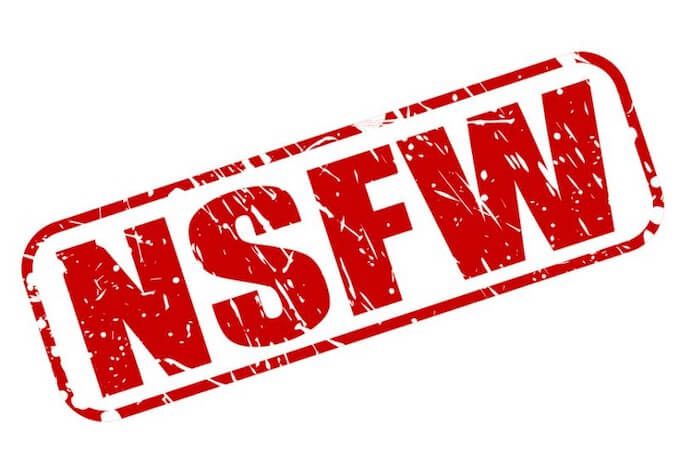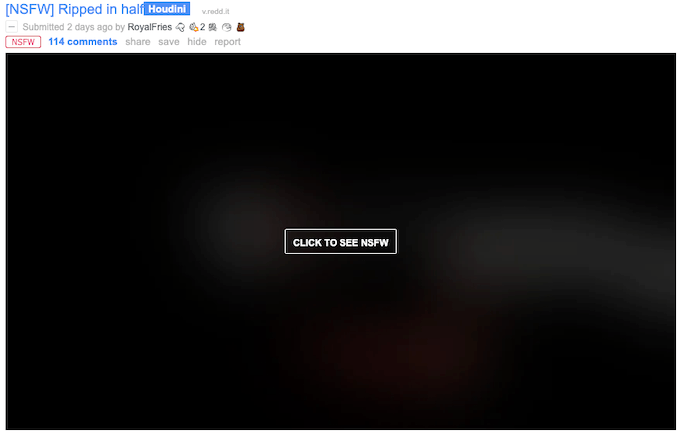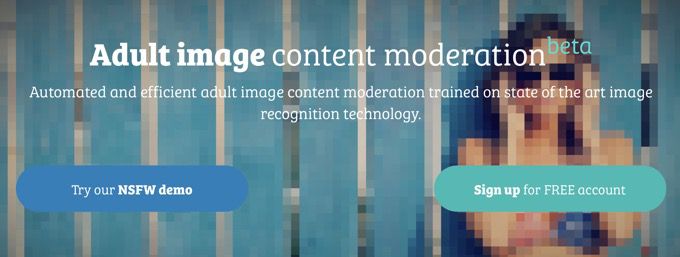NSFW is an acronym for “not safe for work.” You’ve likely seen it around quite a bit, specifically as a warning on photos and sound clips. The acronym is used when the content has the potential to get someone fired from their office due to pornographic, violent, or otherwise inappropriate material.
That’s its original meaning, anyway. As time has gone on, NSFW has evolved to apply to any content that might make someone uncomfortable. Essentially, if you see it attached to something, turn your screen away and check it out yourself before you share the content with anyone else.

How Sites Use the NSFW Tag
Curiously enough, the NSFW tag is only rarely used for extreme gore. More often than not, the “not safe for life,” or NSFL tag, is used in its place. NSFW is almost always going to involve nudity, sexual content, or graphic language.
Some sites have begun to provide users the ability to block content that is NSFW. In some cases, the content will be blurred out and you have to click the blurred image or video to show the content. This is perhaps best seen in the subreddit Fifty Fifty, where an image is posted that may be something good or something bad. The only way to find out is to click.
Be warned: Much of the content on the subreddit is downright disgusting, but it serves as a good example of a NSFW filter. The only way to see the content of the post is to click the link to its Imgur page.
How to Use NSFW
Whether you’re on social media or you’re a website owner and you want to give users warning that some of the content may not be for them, there are times when NSFW is appropriate to use.

Before posting anything, ask yourself:
- Does this contain sexual content, crude language, or otherwise inappropriate material?
- Would I be okay with a child seeing this content?
- Could it make someone uncomfortable?
- Would someone potentially lose their job for seeing this at work?
If the answer to any of those questions is “yes,” just toss a “NSFW” into the title. It’s just a quick heads-up to the recipient. It lets them know that perhaps it’s better to wait until they’re alone to view the link, or at the very least to not click it when on a company or school computer.
How to Create a NSFW Filter
There are a few ways to create a filter for your own website if you want to blur NSFW content. The first is an automated method that uses Computer Vision and the PixLab API. To use this method, you must implement the PixLAB API. By calling the API through a PixLab API Key, images will be automatically tested whether they are NSFW or not.

The image will receive a numerical score. The closer the image is to “1,” the more NSFW it is. Of course, this all works in the background, but actually introducing the code to your website takes a bit of time and you will need to be familiar with how to code using the language of your site.
You can find the details of how it works on dev.to and the actual code on github.
Another option is to simply link to the image. This requires much more manual input, but rather than embedding an image in a blog post, warn the reader that it is NSFW and then provide a link. If they follow the link, ensure they have enough forewarning before clicking.

A third option is to rely on automated services like imagga, Microsoft’s Azure Content Moderator, or similar services. Many of these are paid services, but if you run a website or a dedicated forum and you don’t have a moderation team, tools like this can help simplify day-to-day management.
There are other options available to you, as well. You can tie user posts to a Facebook account. For example, if they have less than 50 friends, restrict their posting capabilities until images can be reviewed by a human. You can also provide a “Report” button for users to self-report NSFW images they come across.
